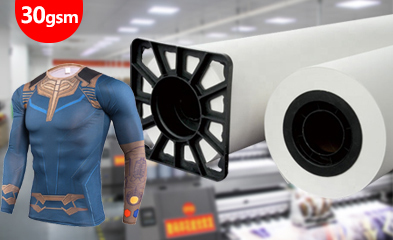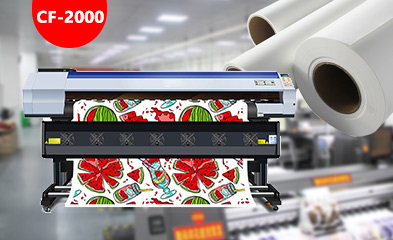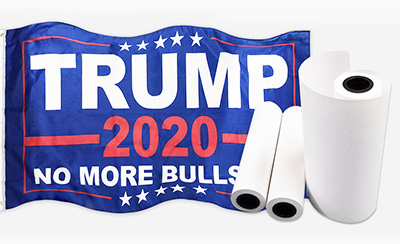HOT SALE
APPLICATION
Phone:+86-15215969856 E-Mail: 396838165@qq.com
Sublimation printing has revolutionized the textile printing industry by offering vibrant, durable, and long-lasting designs on fabric. Unlike traditional printing methods, sublimation creates a permanent bond between the ink and fabric fibers, resulting in prints that won’t crack, peel, or fade easily. However, the success of this printing technique hinges on one critical factor: the substrate material. Polyester fabric serves as the ideal foundation for sublimation printing, offering unique properties that make it indispensable for achieving professional-quality results.
The Science Behind Sublimation Printing on Polyester
Sublimation printing relies on a chemical reaction where sublimation inks bond with polyester fabric under controlled heat and pressure, making polyester essential for the process.
Why Sublimation Requires a Polyester Substrate
Sublimation printing works through a process where solid dye particles transform directly into gas when heated, bypassing the liquid phase entirely. This gaseous state allows the dye molecules to penetrate and bond with synthetic polymer fibers at a molecular level. Polyester fibers, being synthetic polymers, have the necessary chemical structure to accept and permanently hold these dye molecules. Natural fibers like cotton lack the appropriate molecular structure to create these permanent bonds, making polyester fabric for sublimation printing the preferred choice for professional applications.
How Heat and Dye Interact with Polyester Fibers
When sublimation inks are heated to approximately 400°F (200°C), they transform into a gaseous state and open the polyester fiber pores. The gas molecules then penetrate deep into the fiber structure, where they cool and solidify, becoming permanently embedded within the fabric. This process creates a chemical bond rather than merely sitting on the surface, ensuring exceptional durability and color vibrancy that remains intact even after repeated washing and exposure to environmental factors.
Differences Between Polyester and Other Fabrics in Dye Retention
The molecular structure of polyester fibers features long polymer chains with spaces that can accommodate dye molecules, creating strong intermolecular forces that hold the colorants in place. Natural fibers such as cotton, linen, or wool have different molecular compositions that cannot form these permanent bonds with sublimation inks. Additionally, synthetic blends containing less than 65% polyester content typically produce inferior results, with colors appearing faded or washing out quickly due to insufficient polymer content for proper dye retention.
Key Advantages of Polyester Fabric for Color Longevity
The superior performance of polyester in sublimation printing extends beyond initial print quality to long-term durability and color retention characteristics that make it the industry standard.
Superior Color Absorption and Retention Capabilities
Polyester’s synthetic polymer structure provides exceptional color absorption properties that allow for deep, saturated colors across the entire spectrum. The fabric can accommodate high dye loads without reaching saturation points, enabling the production of rich blacks, vibrant reds, and brilliant blues that maintain their intensity over time. This superior absorption capability makes polyester fabric for sublimation printing ideal for applications requiring photographic quality or complex color gradations.
Resistance to Fading from Washing and UV Exposure
Once properly sublimated, polyester fabrics demonstrate remarkable resistance to color degradation from environmental factors. The chemical bond formed between the dye and fiber prevents color migration during washing cycles, while the embedded nature of the colorants provides protection against UV radiation that typically causes fading in surface-printed materials. This durability ensures that sublimated polyester products maintain their visual appeal and commercial value throughout their useful life.
Durability of Printed Images Over Time
Professional-quality sublimation on polyester fabric can withstand hundreds of wash cycles without significant color loss or design deterioration. The permanent molecular bond between dye and fiber eliminates common printing problems such as cracking, peeling, or flaking that affect other printing methods. This exceptional durability makes polyester fabric for sublimation printing particularly valuable for commercial applications such as sportswear, promotional products, and home textiles that require frequent laundering.
Factors That Influence Print Quality on Polyester
Achieving optimal sublimation results requires careful consideration of various fabric characteristics and processing parameters that can significantly impact the final output quality.
Fabric Weave, Texture, and Weight Considerations
The physical structure of polyester fabric plays a crucial role in determining print quality and application suitability. Tightly woven fabrics with smooth surfaces provide the best conditions for sharp, detailed images, while looser weaves or textured surfaces may create slight variations in ink absorption that affect image clarity. Fabric weight also influences heat distribution during the sublimation process, with lighter weights requiring adjusted temperature and pressure settings to achieve uniform results across the entire printed area.
Role of Coating Treatments in Enhancing Print Results
Specialized coating treatments can significantly improve sublimation performance on polyester fabrics. These treatments enhance dye receptivity, improve color vibrancy, and ensure more uniform ink distribution across the fabric surface. Some polyester fabrics receive anti-migration coatings that prevent dye bleeding during the heat application process, while others feature treatments that accelerate the sublimation reaction, reducing processing time and energy consumption.
Importance of Using High-Quality Inks and Equipment
The success of polyester fabric sublimation depends heavily on using professional-grade materials and equipment designed specifically for the process. Adopt environmental friendly solvents, safe and nontoxic; Wide color gamut, vivid color, including a substantial increase in the black coverage of the professional black of sublimation ink after transfering; Excellent fluency, 360dpi continuously printing 20 meters without breaking and partial holes; After a high temperature of 35 degree, test printing for a long time at low temperature 6-8 degrees; Textile materials after transfering: Sunproof Level 6; Washproof Level 4-5. Premium inks formulated for sublimation provide superior color accuracy, consistency, and longevity compared to standard printing inks.
Choosing the Right Type of Polyester for Sublimation Projects
Selecting appropriate polyester fabric requires understanding the specific requirements of each application and matching fabric characteristics to project needs.
Comparison Between 100% Polyester and Blends
Pure polyester fabrics consistently deliver the best sublimation results due to their complete compatibility with the sublimation process. Composition: 100%T fabrics offer maximum color vibrancy and durability, making them ideal for high-quality applications. Polyester blends containing spandex or other synthetic fibers can also work well, such as fabrics with Composition: 95%T 5%SP or Composition: 92%T 8%SP, which provide stretch properties while maintaining good sublimation performance. However, blends with natural fibers typically produce suboptimal results with reduced color intensity and durability.
Applications in Apparel, Home Textiles, and Promotional Products
Different polyester fabric weights and constructions suit various application categories. Applications include kids’ apparel, fashion accessories, fashion apparel, and home textiles. Lightweight fabrics with Weight: 120gsm to Weight: 150gsm work well for apparel applications, while heavier fabrics ranging from Weight: 180gsm to Weight: 210gsm provide durability for home textiles and promotional items that require frequent handling or washing.
How Fabric Selection Impacts Final Output Quality
The choice of polyester fabric directly influences color reproduction, image sharpness, and overall print durability. Fabrics with different surface textures create varying degrees of light reflection, affecting the visual appearance of printed designs. Smooth interlock fabrics provide excellent detail reproduction, while bird’s eye textures can create interesting visual effects but may slightly reduce fine detail clarity. Understanding these relationships helps ensure optimal fabric selection for each specific project requirement.
Introducing Changfa Digital as a Trusted Sublimation Solution Provider
Professional sublimation printing requires reliable suppliers who understand the technical requirements and quality standards necessary for consistent results.
Overview of Changfa Digital’s Product Offerings
Changfa Digital are the sublimation paper manufacturer and digital printing service, it’s the factory for sublimation papers, from base paper to make coating and slitting. Changfa Digital specializes in sublimation transfer paper from 40gsm to 100gsm, covering popular weights for smooth, consistent printing. The company provides comprehensive solutions including Our main prodcuts: 29gsm,35gsm,40gsm, 50gsm, 60gsm, 70gsm, 90gsm, 100gsm transfer papers and maintains The total production value are 3000 Tons per month to meet global demand.
Commitment to Quality and Innovation in the Sublimation Industry
Changfa Digital are the professional sublimation paper manufacturer and supply the digital printing service for 15+ years, demonstrating long-term commitment to the industry. Changfa Digital has been a trusted sublimation paper supplier for over 15 years, handling everything from base paper to packing under one roof. The company’s investment in advanced technology, including We imported 1 set of the most advanced coating line for sublimation paper production daily from Germany, ensures consistent quality and innovation in sublimation solutions.
Conclusion
In conclusion, polyester fabric is the cornerstone of successful sublimation printing, offering unmatched color longevity, vibrancy, and durability due to its unique molecular structure and compatibility with sublimation inks. By forming a permanent chemical bond with dye molecules, polyester ensures prints remain vivid and resistant to fading, even under repeated washing and UV exposure. Careful selection of high-quality polyester fabrics, combined with professional-grade inks and equipment, is essential for achieving optimal results across diverse applications like apparel, home textiles, and promotional products. With trusted suppliers like Changfa Digital providing innovative sublimation solutions, businesses and creators can rely on polyester’s superior properties to deliver professional-quality prints that stand the test of time.
FAQs
Q1: What happens if I use sublimation printing on cotton instead of polyester?
A: Sublimation inks cannot bond properly with natural cotton fibers, resulting in very poor color transfer, washed-out appearance, and prints that will fade or wash out completely after the first laundering cycle. Cotton lacks the synthetic polymer structure necessary for sublimation dye molecules to create permanent bonds.
Q2: Can polyester blends be used for sublimation printing?
A: Yes, polyester blends can work for sublimation printing, but the polyester content should ideally be 65% or higher for acceptable results. Blends with 80% or more polyester content typically produce good color vibrancy and durability, while lower polyester percentages result in progressively reduced color intensity and washfastness.
Q3: Does thread count or fabric weight affect sublimation print quality?
A: Yes, fabric weight and thread count significantly impact sublimation results. Higher thread counts with tighter weaves generally produce sharper images and better color uniformity. Fabric weight affects heat distribution during the sublimation process, with lighter fabrics requiring adjusted temperature and pressure settings to achieve optimal transfer results.
















